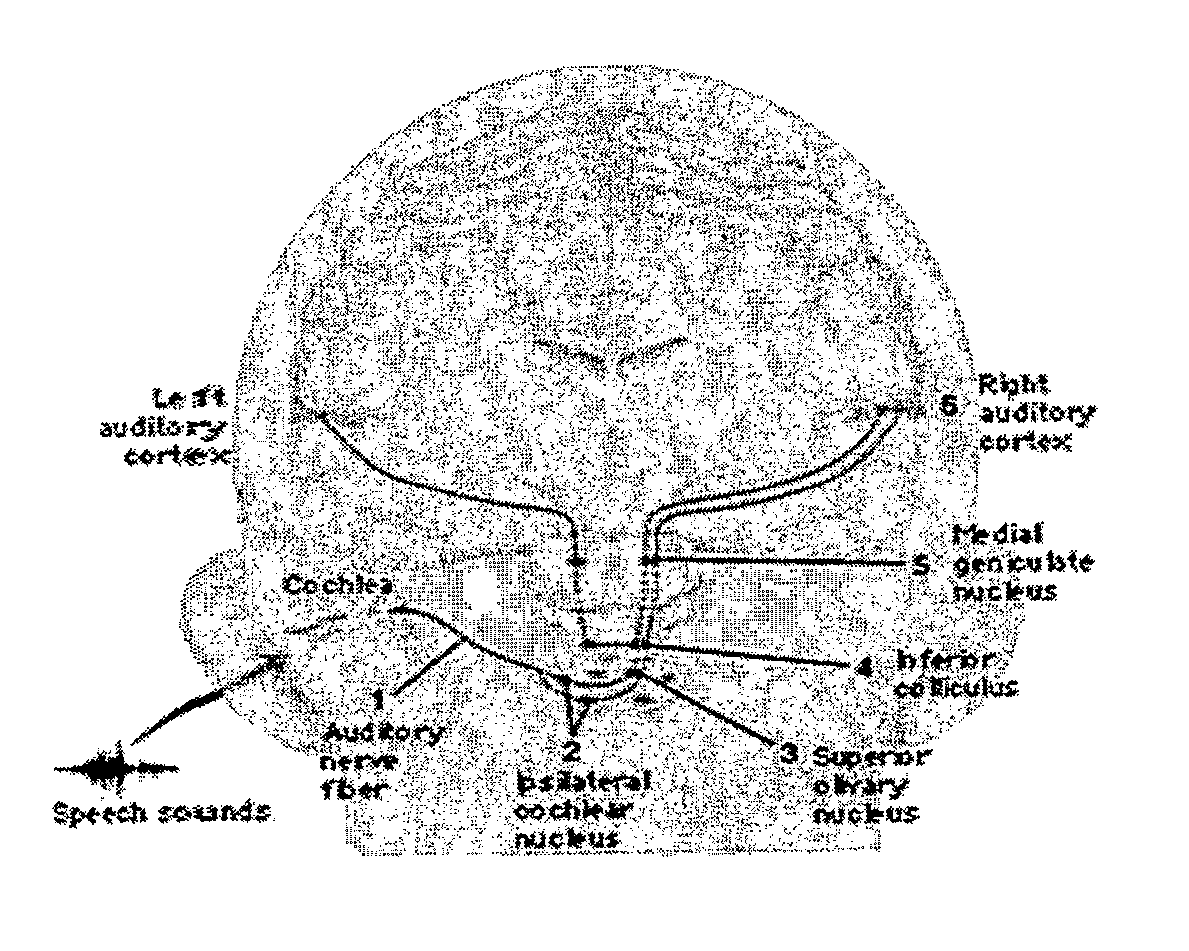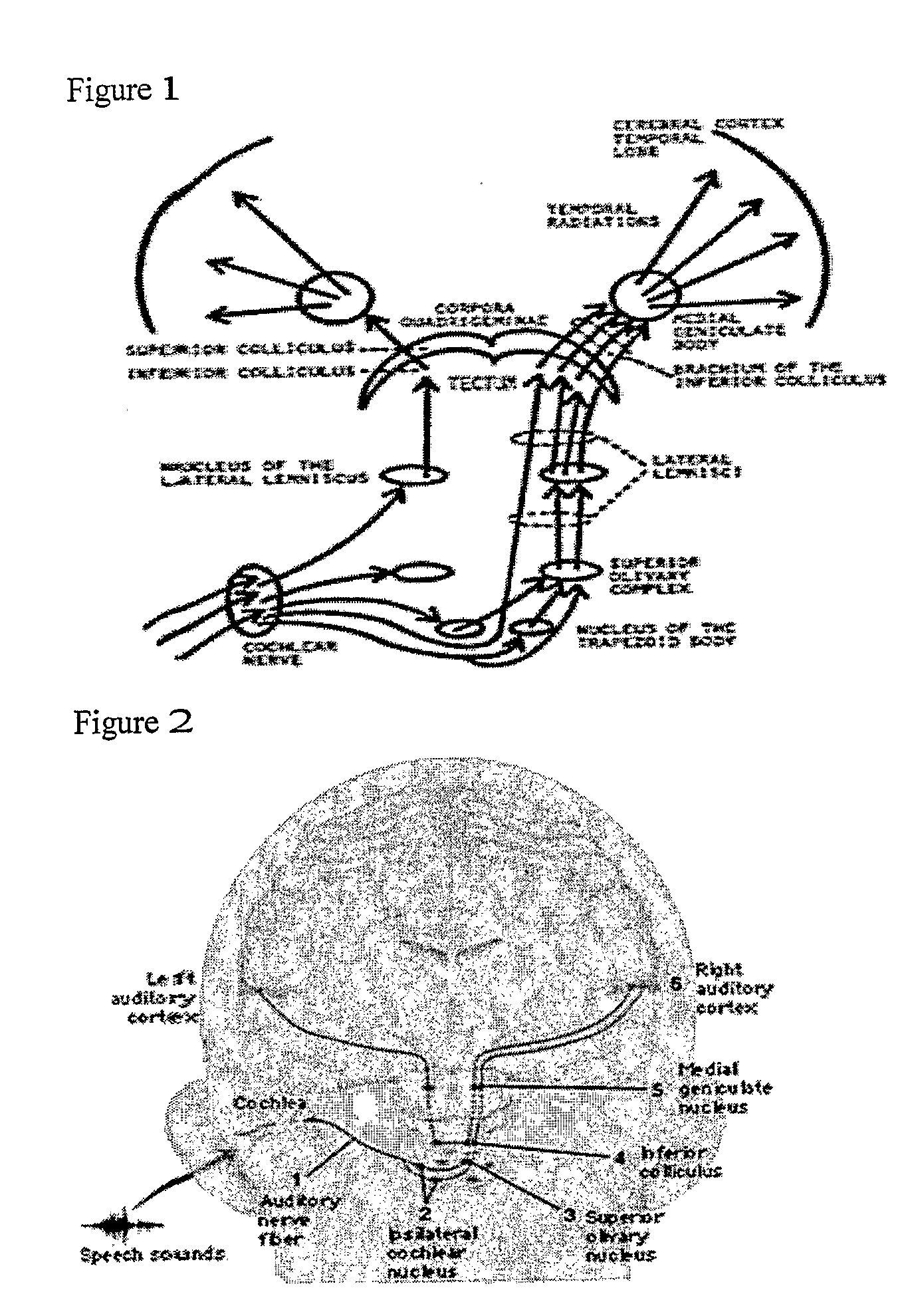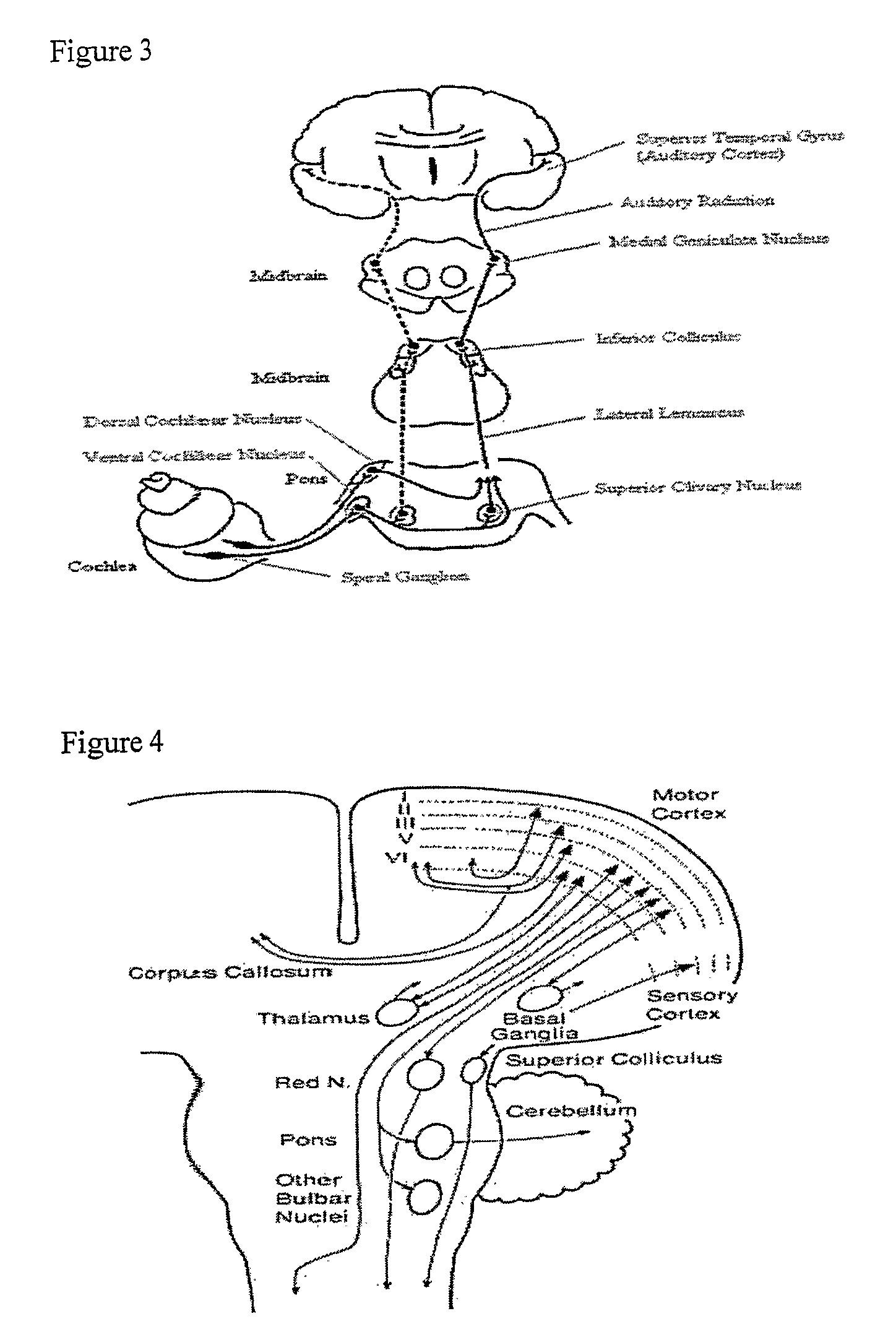Method and Apparatus for Treatment of Tinnitus and Other Neurological Disorders by Brain Stimulation in the Inferior Colliculi and/or In Adjacent Areas
a brain stimulation and tinnitus technology, applied in the field of implantable neurostimulators, can solve the problems of high likelihood of interference with normal hearing, high invasiveness, and damage to brain tissue, and achieve the effects of suppressing or eliminating abnormal neural activity, reducing or eliminating the effects of tinnitus, and reducing or eliminating the effects of the patient's tinnitus
- Summary
- Abstract
- Description
- Claims
- Application Information
AI Technical Summary
Benefits of technology
Problems solved by technology
Method used
Image
Examples
Embodiment Construction
of the Surgery:
[0079] 1. The electrode is inserted through a burr hole into the cranial cavity. This can be done in several ways. [0080] An optional microelectrode for determining the exact position in the brain. [0081] After location of the brain structures, the initial microelectrode can be removed. [0082] An IC region implant device and / or a needle-like implant device that can be inserted like a needle, but when approaching the surface, can, at command, be opened to a fan like structure, that will land on the IC surface. [0083] The electrode is directed to reach the IC using a stereotactic or equivalent system (for example, image-guided surgery). This is done by local anesthesia in the alert patient during ambulatory treatment. This sequence of surgical steps is standard, but the innovations of the current invention involve at this point the location of the implant device that targets the IC region and its method of opening. [0084] 2. The implant device is directed to the relevan...
PUM
 Login to View More
Login to View More Abstract
Description
Claims
Application Information
 Login to View More
Login to View More - R&D
- Intellectual Property
- Life Sciences
- Materials
- Tech Scout
- Unparalleled Data Quality
- Higher Quality Content
- 60% Fewer Hallucinations
Browse by: Latest US Patents, China's latest patents, Technical Efficacy Thesaurus, Application Domain, Technology Topic, Popular Technical Reports.
© 2025 PatSnap. All rights reserved.Legal|Privacy policy|Modern Slavery Act Transparency Statement|Sitemap|About US| Contact US: help@patsnap.com



